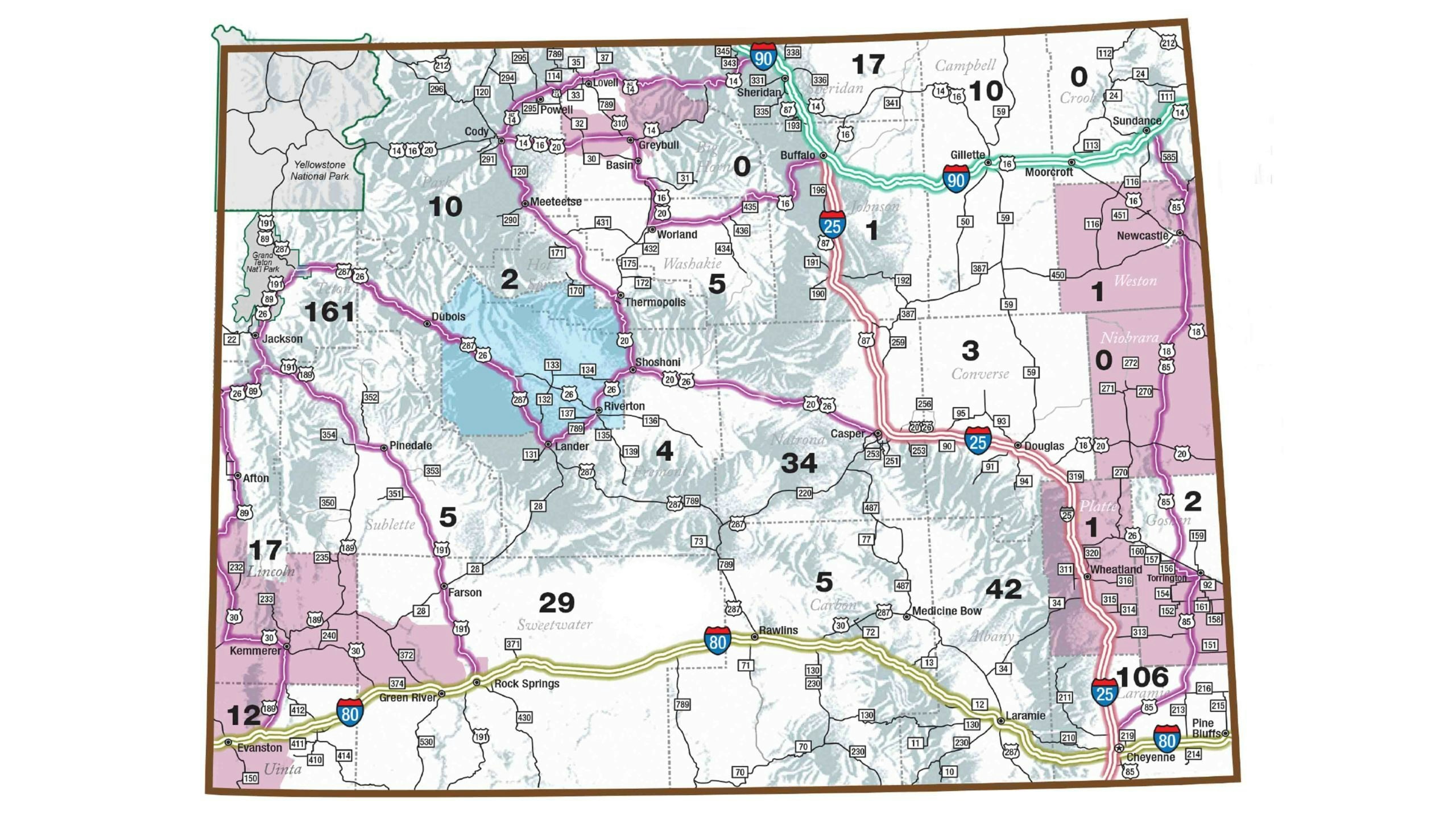More than one-third of the electric cars in Wyoming are registered in Teton County, according to state figures.
Figures from the Wyoming Department of Transportation show that of the 456 electric cars registered in Wyoming, 161, 35.3%, are in Teton County.
The high number of the electric vehicles in Teton County is the result of several factors, including the commitment of the county’s residents to protecting the environment, said Phil Cameron, executive director for Energy Conservation Works of Jackson Hole, a group that promotes alternative energy sources in the region.
“Obviously, at the end of the day, a vehicle is a personal choice,” he said. “So there’s some alignment of values with the benefits personally and environmentally of electric vehicles.”
The figures on electric vehicle ownership in Wyoming were prepared by WYDOT in advance of hearings on its plans to encourage the creation of a network of electric vehicle charging stations along the state’s interstate highways.
According to the the figures, Laramie County has the second-highest number of EVs in the state at 106, about 23.7%. That means Teton and Laramie counties have more than half of the state’s electric vehicles at 266.
Albany County placed third for electric vehicle ownership at 42, followed by Natrona County at 34 and Sweetwater County at 29. Only three counties, Big Horn, Crook and Niobrara, have no electric vehicles.
Cameron’s organization works to promote alternative fuel uses throughout the region, including the use of electric vehicles. It has been involved with efforts to encourage the construction of electric vehicle charging stations throughout Teton County, which he said also figured into the popularity of EVs.
“In order to support those choices, there’s been a lot of groundwork that has been laid by local organizations,” he said. “We broke the ‘chicken and the egg’ cycle by providing public charging at a higher (charging speed) than wold be available at home.”
Since Jackson, Teton County and private businesses began setting up charging stations, Cameron said, visitors from outside the area have been using them more often.
“We can really track the use of those public stations,” he said. “We have several hundred unique users. That tells us it’s not just local users, it’s people who are starting to access national parks (with electric vehicles).”
He added that rising gasoline costs have also boosted the interest in electric cars, given the fact that a 100-mile trip in an electric car might cost $1.75, while the same trip in a gasoline-powered vehicle might cost $20.
“We see adoption rates intersecting with the fuel rates in a very causal relationship,” he said. “As we get to $5 (per gallon) petroleum costs, we see a huge uptick in the adoption of alternatives.”
The draw for the buyer of electric vehicles in Laramie County is slightly different than for those in Teton County, said Kevin Harris, general manager for Ken Garff Cheyenne, which includes Ford, Toyota and Hyundai dealerships.
“What I see is customers who are interested in the latest and greatest technologies,” he said. “It’s not necessarily the green message. There’s so much amazing technology.”
Harris said most of the electric car buyers in Laramie County seem to be using EVs as second cars rather than primary sources of transportation.
“It might be different if we lived in a metro area where people travel and live within a 20- or 30-mile radius,” he said.
He added demand for the fully electric vehicles is growing, as evidenced by 100 reservations made by people wishing to buy Ford’s F-150 “Lightning” pickup truck, a vehicle that is not yet available.
He added that while the construction of a network of charging stations will help ease “range anxiety” that might discourage some from buying the vehicles, the driving force for sales in the future will be fact that younger drivers will simply be more comfortable with the technology.
“I think we’ve got another generation of drivers coming up who are starting to drive these vehicles and this is not new technology to them,” he said.





